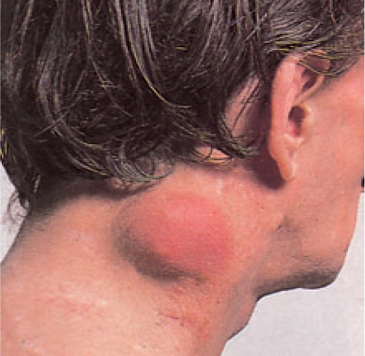Non-Hodgkin’s Lymphoma Symptoms, Causes, Diagnosis and Treatment

What Is Non-Hodgkin’s Lymphoma?
Lymphocytes are white blood cells found in the lymph tissue and are responsible to fight infections. Lymph tissue dwells in several organs of the lymphatic system including lymph nodes and spleen. The cancer initiates from white blood cells known as B lymphocytes in the Non-Hodgkin’s Lymphoma. There are many subtypes of this lymphoma, the most common ones being follicular lymphoma and diffuse large B-cell lymphoma or DLBCL. Treating Non-Hodgkin’s Lymphoma on time is necessary to avoid serious health problems.
What Are The Symptoms Of Non-Hodgkin’s Lymphoma?
The symptoms may evolve depending on the area affected and the rapidity of cancer growth. Some common symptoms include:
- Fever.
- Swelling.
- Abdominal pain.
- Declining weight.
- Intense sweating at night.
- Weariness.
- Coughing and difficulty in breathing.
- Chest pain.
- Lymph nodes in the neck or groin may swell.
- Headache and personality change.
If one or a combination of these symptoms shows up, victims must consult a doctor without any delay.
What Causes Non-Hodgkin’s Lymphoma?
The factors that trigger Non-Hodgkin’s Lymphoma are unknown but it occurs when excess lymphocytes are produced in the lymph nodes. Generally, a regular life cycle of lymphocytes exist i.e. these white blood cells are produced and replaces the old lymphocytes that dies. During Non-Hodgkin’s Lymphoma, lymphocytes are produced abnormally and do not die resulting in an excess presence of lymphocytes in the lymph nodes. As a result, the area in which lymph node is affected swell. Now the cancer can either initiate from the B cells or the T cells. B cells tend to eliminate infectious particles by producing more antibodies while T cells tend to kill them directly. The type of cells affected is considered to determine its treatment.
What Are The Risk Factors Of Non-Hodgkin’s Lymphoma?
There are four major factors that may increase risk of Non-Hodgkin’s Lymphoma. However, there are cases when people with these factors do not develop the disease. Factors include:
- Chemicals.
- Medications suppressing the immune system.
- An age of 60 years or older.
- Underlying infections or viruses such as HIV and Epstein-Barr virus.
How Is Non-Hodgkin’s Lymphoma Diagnosed?
The following tests and methods are used to diagnose Non-Hodgkin’s Lymphoma:
- X-ray.
- Magnetic resonance imaging or MRI.
- Computerized tomography or CT scan.
- Positron emission tomography or PET.
- Urine test.
- Blood tests.
- Physical examination.
- Bone marrow observation to locate cancer cells.
- Sample of lymph node tissue.
How Is Non-Hodgkin’s Lymphoma Treated?
The treatment plan is created after determining the type and severity of the Non-Hodgkin’s Lymphoma. In cases where the cancer is indolent, treatment is not necessary for several years. Once diagnosed, however, indolent lymphoma needs regular check-ups to ensure the cancer does not spread too much. In other cases when symptoms evolve, the following methods might be helpful:
- Transplantation of stem cells.
- Chemotherapy to kill cancer cells.
- Radiation therapy.
- Medications to deliver radiation that eliminates cancer cells.
- Medications to improve the immune system.
These treatments can help improve the symptoms of Non-Hodgkin’s Lymphoma.
By : Natural Health News




